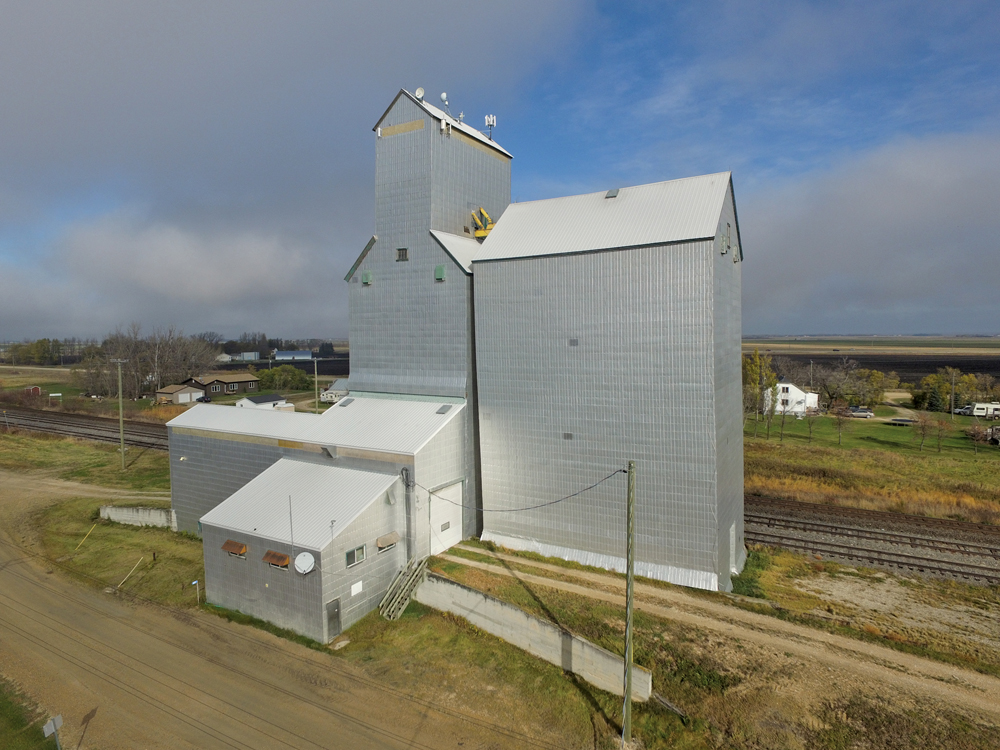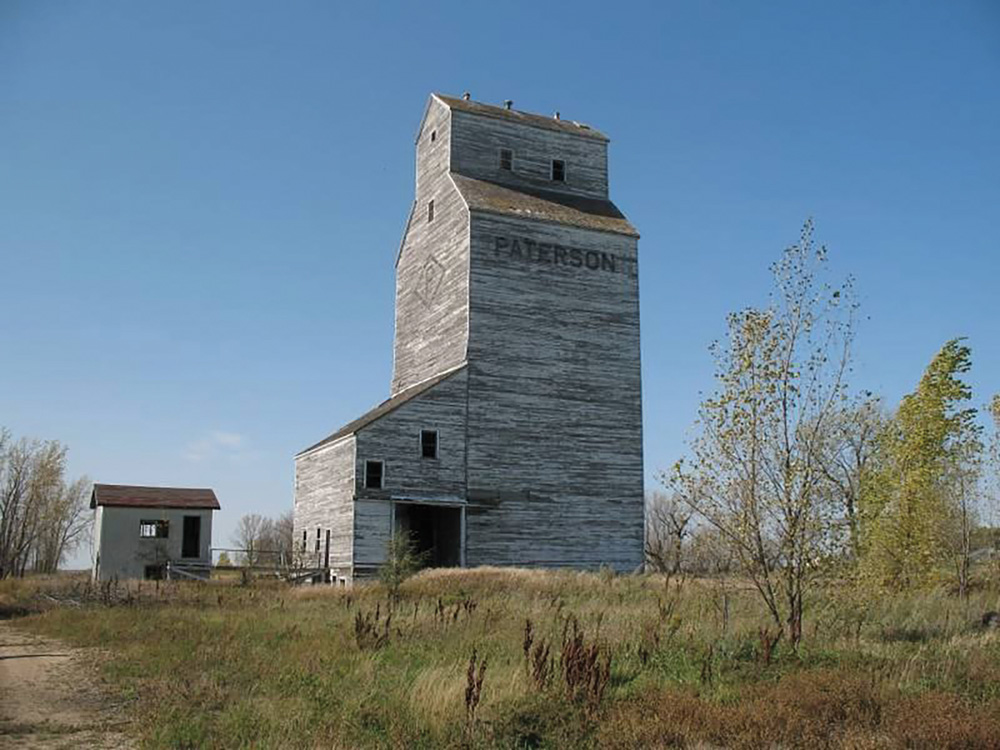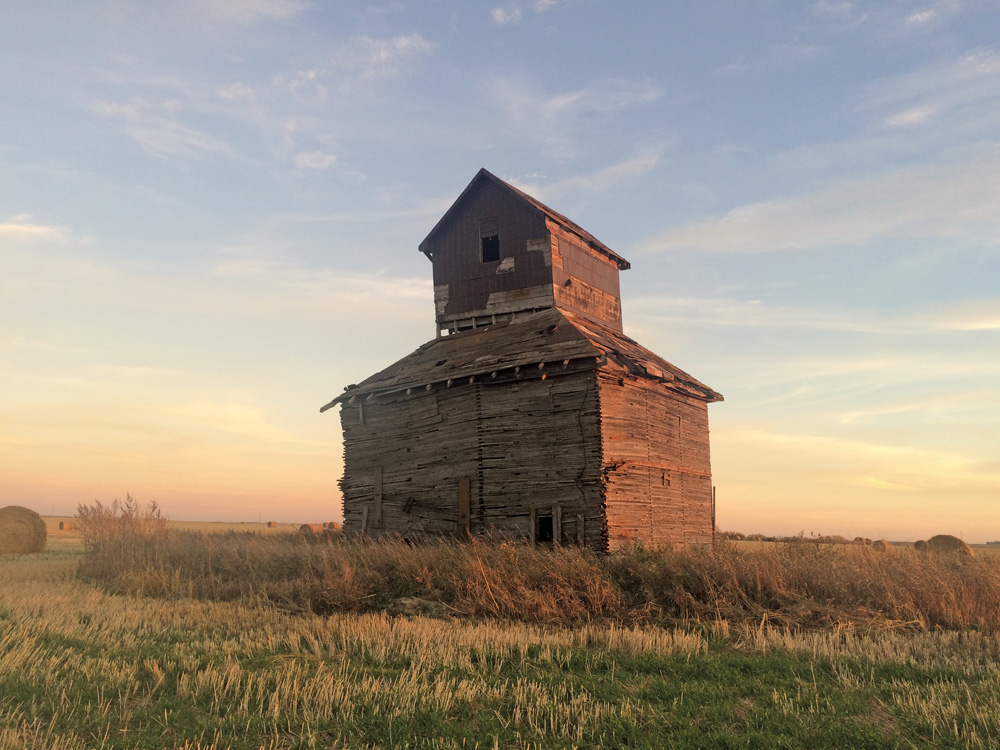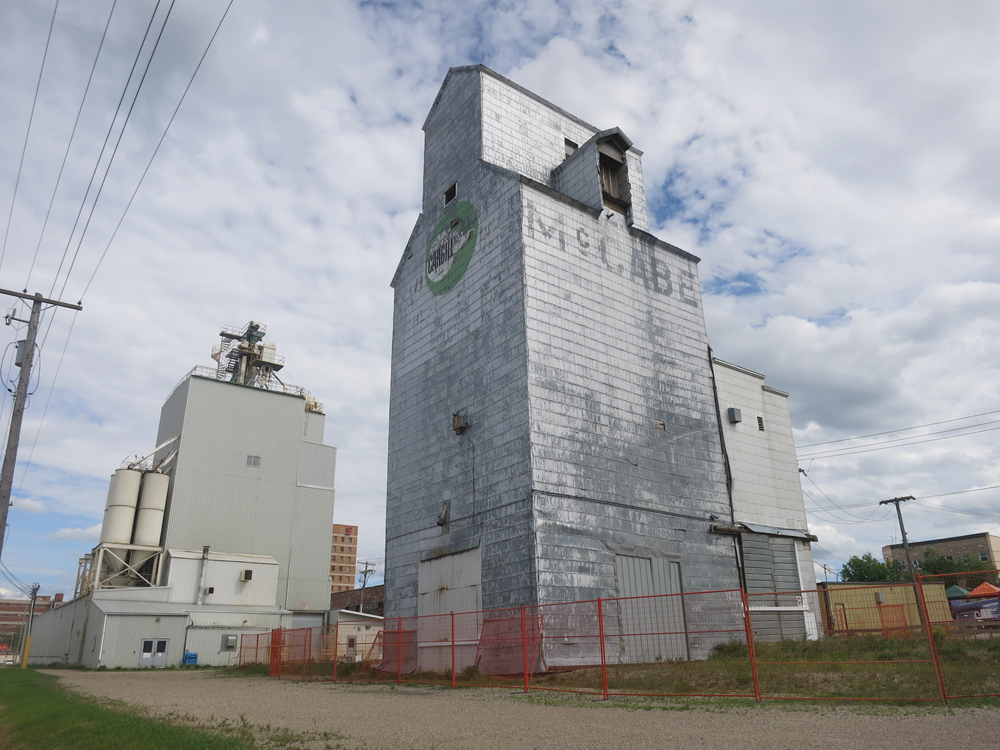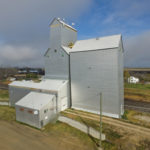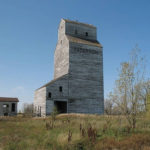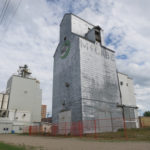
Birdtail Pool_cmyk.jpg
A 30,000-bushel elevator at the railway siding of Birdtail, on the northeast edge of the Waywayseecappo First Nation near Rossburn, was built and operated by the British America Elevator Company. Sold to Manitoba Pool in 1929, the elevator closed in December 1974 and was later used for private grain storage. Its railway line was abandoned in 1996 and the building was destroyed by fire on the evening of October 13, 2008. The cause of the fire was undetermined.
Photo: Oliver Joslin
Dufresne Pool_cmyk.jpg
A 36,000-bushel elevator in Dufresne, along the Trans-Canada Highway east of Winnipeg, was built in 1949 by Manitoba Pool Elevators. A 70,000-bushel, 18-bin crib annex joined it in 1969. Closed in November 2000, the elevator was purchased by four local farmers and is still used for private grain storage. Its last agent, who lives in retirement nearby, provides advice on operation and maintenance.
Photo: Gordon Goldsborough
Ridgeville Paterson_cmyk.jpg
An elevator in Ridgeville, northeast of Emerson, was constructed in 1947 by the Paterson Grain Company, supplementing an older elevator from 1935. Both elevators were closed when the CN Ridgeville Subdivision was abandoned in 1981 and the older one was demolished at that time. The newer elevator sat vacant for many years until, in 2009, it was restored for use in mixing livestock feed. It was destroyed by fire in April 2010.
Photo: Carol Wilkinson
Windsor Private.jpg
A small, wooden elevator in a field east of highway No. 242, south of La Riviere, is thought to have been built in the 1890s by Diggory Windsor and his brothers. It stood in their farmyard along with a brick house and shanty barn. A stationary engine and flywheel attached via the north side of the elevator drove its leg. The cupped belt lifted the grain to one of five bins, each holding about 1,200 bushels. By the 1970s, an external auger was used. Around 1979, the owner stopped using the elevator because its capacity was too small. It is slated for demolition due to concerns about rotten wood in its north wall.
Photo: Alyssa Rempel
Brandon Cargill.JPG
The history of ownership of this grain elevator, along Pacific Avenue in Brandon, is illustrated on its four sides. It was built around 1937 for the McCabe Brothers Grain Company, as shown by the name on its west side. In 1965, the company erected six steel grain tanks and a feed-processing mill immediately east of the elevator. McCabe sold its elevators to United Grain Growers in early 1968 but this facility was excluded from the deal. Later that year, McCabe’s remaining assets were purchased by National Grain, named on its east side. The elevator (and the nearby mill) was bought in 1974 by Cargill, whose corporate signage is displayed on its north and south sides. At one time served by a spur line of the Canadian Pacific Railway that ran along its north side, there is no longer any rail service. Although slated for demolition in early 2016, it was still standing when this photo was taken in June 2016.
Photo: Gordon Goldsborough
In the 1950s, there were over 700 grain elevators in Manitoba. Today, there are fewer than 200. You can help to preserve the legacy of these disappearing “Prairie sentinels.”
The Manitoba Historical Society (MHS) is gathering information about all elevators that ever stood in Manitoba, regardless of their present status. Collaborating with the Manitoba Co-operator it is supplying these images of a grain elevators in hopes readers will be able to tell the society more about it, or any other elevator they know of.
MHS Gordon Goldsborough webmaster and Journal editor has developed a website to post your replies to a series of questions about elevators. The MHS is interested in all grain elevators that have served the farm community.
Read Also

Port of Churchill revamp gathers pace
Canada’s Port of Churchill Plus update plan hopes to expand trade, including agriculture trade, at Manitoba’s Arctic sea port
Your contributions will help gather historical information such as present status of elevators, names of companies, owners and agents, rail lines, year elevators were built — and dates when they were torn down (if applicable).
There is room on the website to post personal recollections and stories related to grain elevators. The MHS presently also has only a partial list of all elevators that have been demolished. You can help by updating that list if you know of one not included on that list.
Your contributions are greatly appreciated and will help the MHS develop a comprehensive, searchable database to preserve the farm community’s collective knowledge of what was once a vast network of grain elevators across Manitoba.
Please contribute to This Old Grain Elevator website here.
You will receive a response, by email or phone call, confirming that your submission was received.
Goldsborough is especially interested in determining when elevators were demolished. Readers with photos of elevator demolitions and dates of when these occurred can contact him directly at [email protected] or call 204-782-8829.

